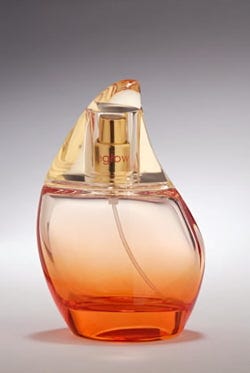January 30, 2014
Many products are targeted by counterfeiters when it is easy to copy their packaging. If the product manufacturer uses undifferentiated bottles and boxes the counterfeiter can easily obtain the same materials and use desktop publishing systems to print packages and create counterfeit labels.
The counterfeit market is a multi-billion dollar market. The counterfeiter prefers a strong brand since it equates to higher-priced merchandise. It is therefore not a surprise that counterfeiting perfumes is a hot item, as confusion is another ally of the counterfeiter. If there are many different, ever-changing versions of the packaging, and that’s the case in the perfume market, how is the consumer to know when a new product package arrives that it isn’t legitimate?
 In an attempt to counteract the threat of counterfeit packaging of cosmetics and perfumes, Vitro is making inroads in its efforts to manufacture glass containers that are difficult if not impossible to forge.
In an attempt to counteract the threat of counterfeit packaging of cosmetics and perfumes, Vitro is making inroads in its efforts to manufacture glass containers that are difficult if not impossible to forge.
Vitro, a leading manufacturer of the glass industry in México, has focused on developing containers with more sophisticated finishes, in terms of painting, blending and hot stamping processes, among others, that, although more expensive, at the end of the day give the benefit that they are much more difficult to copy.
Glass is the best packaging option for the cosmetic and perfume industries, as it gives a premium look to the brand and conserves the characteristics of its contents for a longer period of time including the aromas.
Glass allows for a broad range of shapes, finishes, decorations, colours and designs that fulfils any type of requirement thus contributing to the product’s attractiveness to the consumer in addition to being a material that is 100 percent recyclable. Adding anti-counterfeit decoration technologies to the design of the glass bottle might help frustrating a counterfeiting threat.
But does it really help the perfume industry? With the high frequency the perfume industry is introducing new packages and fragrances; the consumer doesn’t have any idea whether the offered bottle is genuine or fake. The use of ‘counterfeiting protected’ bottles might be useless as the ‘faker’ can introduce to the market any fancy designed bottle, mirroring or not the original, and the consumer will buy, assuming the product is genuine. It is impossible, regardless all the high tech counterfeiting solutions offered by the industry, for the consumer to separate original from fake, as most counterfeiting systems are hidden from him.
And don’t expect the consumer, while shopping, walking around with a infra-red detector or any other fancy hi-tech device in his shopping bag.
The photo in this article is an anti-counterfeiting bottle developed by Vitro for True Glow of Avon.
For the readers who like to know something about the perfume itself, here we are (they are not my words, I am not that lyrical): True Glow is a fragrance for happy woman. Jean-Louis Grauby, a French perfumeur, created it for Avon. True Glow is an optimistic and luminous floral fragrance with woody middle notes and musky base. The refreshing opening blends with sweet Fresia, mouth watering apple and crisp lemon. The note of Lotus and Passion Flower are blended with warm woody nuances in the heart of the composition. The sensual base includes Amber and Musk.
I hope when you buy Avon’s True Glow, you end up with the genuine product in your hands.
Yesterday I posted at my blog: Best In Packaging, a detailed article about counterfeiting under the title: “Counterfeiting: The Industry is on the Wrong Track”. In it: “The industry has to go back to the basics. And the basics are its consumers. It is the consumer who decides to buy. And there is no consumer willing to buy an expensive perfume or liquor knowing it is not genuine. He/she will go for the original. That means that the industry, suffering under counterfeiting attacks, has to supply a tool to the consumer. A way the consumer can easily verify whether the product is genuine or false. All covert security measures are useless and are only of interest to the company itself, the consumer needs an overt system which enables him to check the authenticity of the product.” …. read the full article
About the Author(s)
You May Also Like


